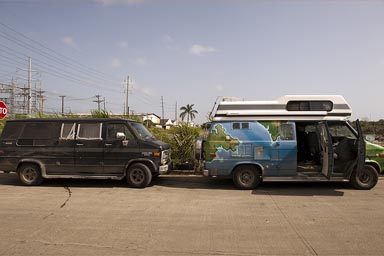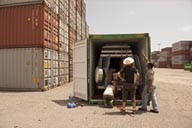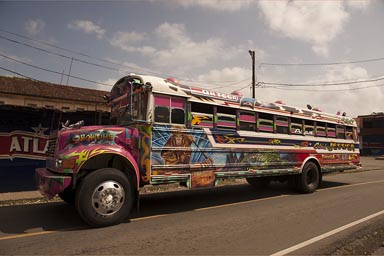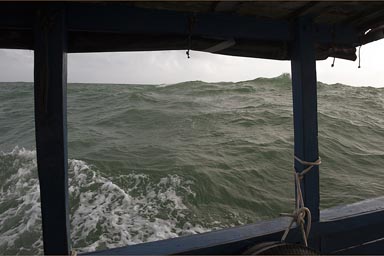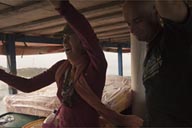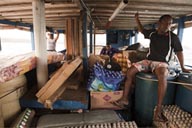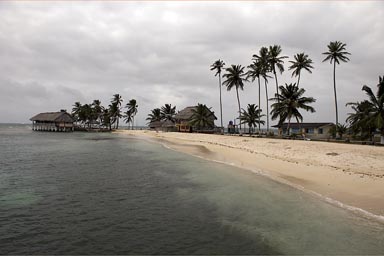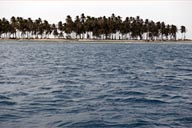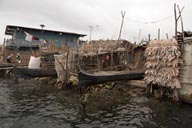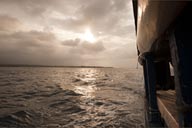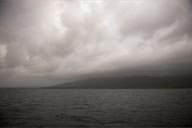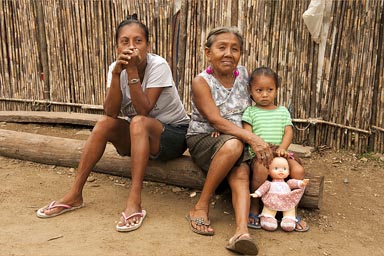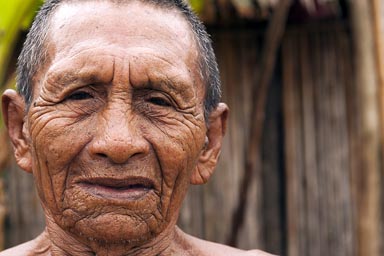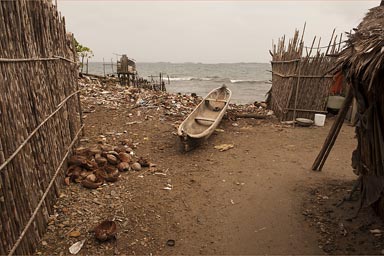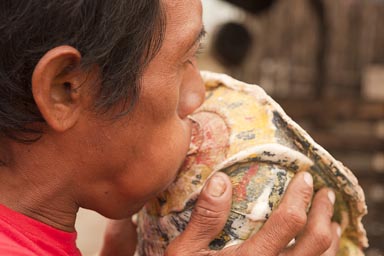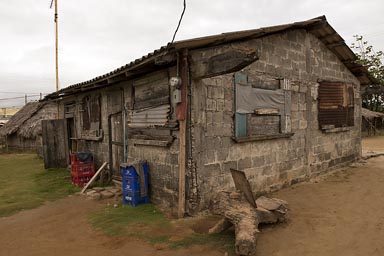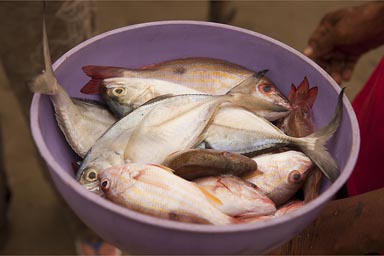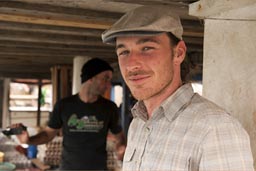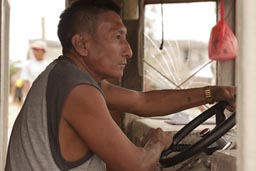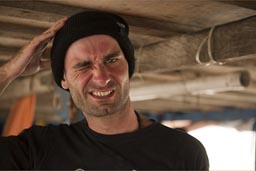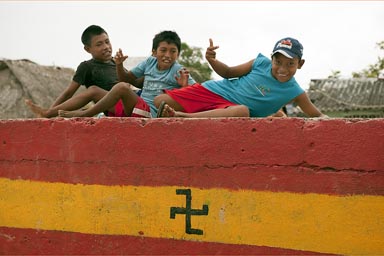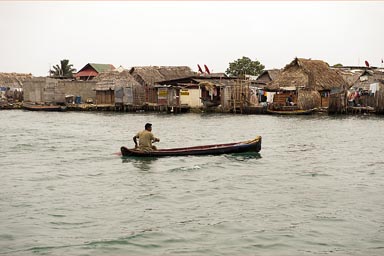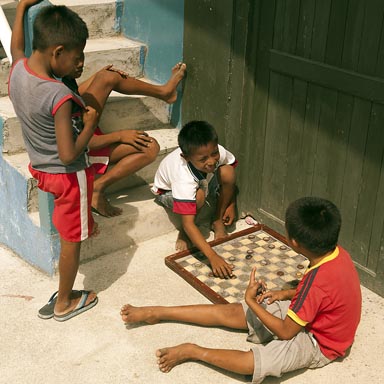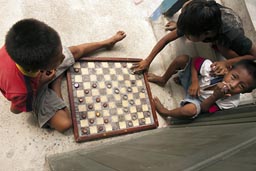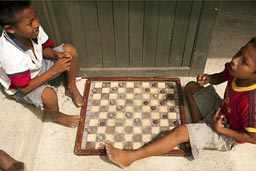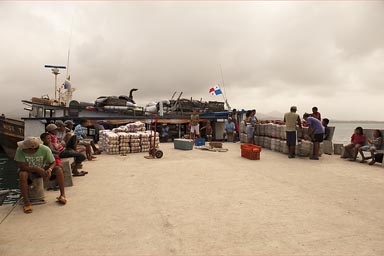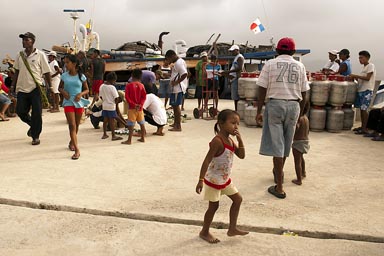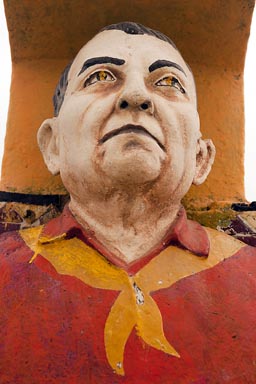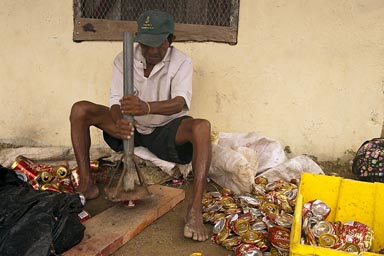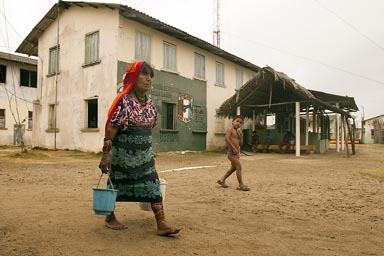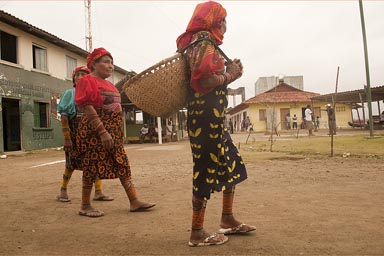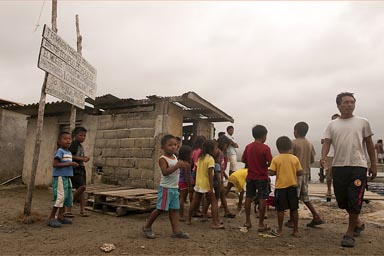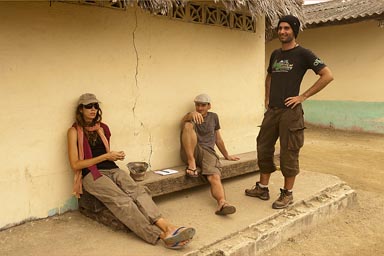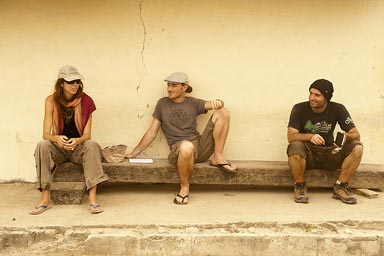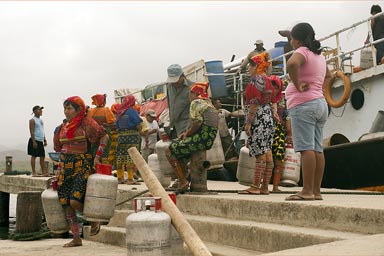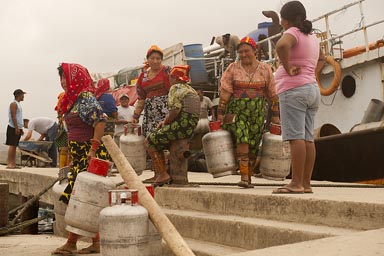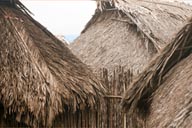www.thisfabtrek.com > journey > central-america-caribbean > panama > 20120315-kuna-yala-san-blas
Panama2Colombia, bad weather.
Download GPS (KML) track/waypoints.
It's been on TV for days, bad weather in the Caribbean, port town Colon reports show huge waves, palm trees that bend in hurricane like winds, but I do not even take note of all this here in Panama City. My primary concern is a different, how can I ship the van, RoRo, a container vessel, share a container with somebody else to cut costs in half? Yes here in Panama the Panamericana Highway ends in the Darien Jungle, and unless one has a seriously equipped 4x4 and wants to cut his way through in some 120 days there is little other choice than go on a boat.
And then Christina and I in Casco Viejo run into another US registered Chevy-type van and Germans Max and Jessica who just sold their camper to Spanish/Basque/French Alex and Julian. And though their van is really not a van but a camper and looks as if it never would fit in a container the Spanish French and us embark together on the incredible adventure that I will tell now.
After so many copies delivered to reluctant to corrupt police to get our immigration papers readied in Panama City we drive to Colon where evenings I have almost a knife battle with a crooked guardian who threatens to puncture my tires if we parked where we parked, because this was 'his' terrain. Mornings, and the idiot guardian has remained subdued all night, we deflate the camper's tires to almost rim level and manage to drive it into the container while C. back in Colon waits and earns her fare by winning 115USD in the casino.
We are set and think we have five to seven days to get to Cartagena, Colombia to pick up our vans again. Just how shall we get there?
Our options have always been: 1.) a flight out of Panama City, 2.) a tourist sail boat journey for 500USD or 3.) just take what comes, go as far as possible by bus, then lanchas (i.e. small boats), go from island to island till Colombia. At this point the first option doesn't apply anymore as all is booked out, the second we deem too expensive, thus it takes little effort by Alex, Julian and Christina to get me all enthusiastic for the third choice. [Really, there was no other choice anyway as, unknown to us until long after, for reasons of bad weather all sailboats were canceled].
Colon2Portobello, set out for an adventure.
Usually I sit in my car, start the engine and go, where I want, when I want, at the speed I want, ....
This journey is different. I go like backpackers go, take a taxi to the bus station, take the bus, get dropped at overrated backpackers places, investigate timetables and go on another bus. The 'great' thing in Panama is these great, old US school-busses, so wildly painted go at the incredible speeds of 110kms/h on unpaved roads.
So we reach Portobello and Capitain Jack's place is not worth it, get to Palenque and eventually Miramar. And on Miramar pier the vessel, Niño Kevin, is being loaded with building steel, cement, diesel, pipes, beer, eggs, and what else have you, the vessel or cutter belongs to a Chinese business man. It's going to move our way along the coast, leave soon, was supposed to leave much earlier but as a result of rough weather couldn't.
This boat is our chance to go quickly and I know it is ours. Just our newly found brothers in arms like to discuss things, and Alex likes to run around the block and contemplate going back to Panama City and take a bus down to Darien, a 4x4 journey to the coast and …. instead of sit down and enjoy a beer or five in the rain; yes Alex and I are different, we know that on the first day; he doesn't drink beer. In situations like this sitting still and drinking is often the best choice as the solution is already on its way. Late in the afternoon the captain come around, outlines the journey, proposes 50USD, we cut him down to 40, OK! But without comida, he smiles wryly.
Take to a wild Caribbean sea.
Sometimes I wonder how my body knows time, I wake before dawn and wake C. a half hour later when some light seeps through the dirty window of our stale room, one minute later Julian's iphone rings, it is 6 o'clock and we don't want to miss our small commercial vessel.
There is no breakfast today and too lucky we don't get any. At 8 we pull the ropes in, our backpacks, at least they, get a dry place behind the helmsman's, we, the four passengers and five crew are left to the powers of the elements. When we stomp into the first big waves beyond the protection of the reef C. speaks her mind bluntly: "'We' don't have to be afraid to die!" These waves are high indeed, an angry ocean of dunes, house high they roll in and out, move in all directions and our little cutter goes up and down and to the sides with them and all the time. First we all hold on tightly and press our hips against the fuel barrels that are tide to the railings. Alex instructs to watch the waves and the horizon, and we all try that while trying not to be thrown around. Then C.'s the first to throw up, a sharp fountain of water and it is being washed away underneath our feet, later comes yellow water, stomach water and she wouldn't stop no more; poor girl. I find her a place on top of the cargo space or the engines, whatever, and squeeze myself behind her to massage her neck. While we change places, and looking up and down should better be avoided, I feel this very strange feeling myself but manage to hold it down one more time. Behind C. on top of the cargo space, and C. looks as if she has given up with life on this planet, I try to improve my situation, move this nasty tire out of my back. Once moved up it makes a comfortable rest for my head and even my buttocks I can squeeze between two moving boards. With my feet now up and my head back I close my eyes and fall almost asleep in defiance of common sense, while C. keeps vomiting to the tunes of the gross gyrations of the ocean and our boat. Only later when she is almost finished up I can break her stubbornness, convince her to lay her head down on my chest, and then we both or at least I fall asleep for almost two hours, squeezed in between two moving boards and C. on top, [I swear I slept and well].
Seemingly endless it goes, and C. describes it later as "the worst five hours of my whole life" and when the rolling becomes softer and the cutter tramps behind a barrier reef I notice that also Julian and Alex have gone down Christina's path.
Porvenir and onwards behind the barrier reef.
We pull into Porvenir to go on land for registering on Guna Yala land, and this island-land feels unbelievably soft and moving, our senses are still drugged. C. asks "can I get an airplane out of here?" and the policeman points behind himself; yes Porvenir, an island some 200m wide and some hundred palm trees atop and taking a coco nut is high crime, has an airfield, a police and customs station, a tax-collection offices, a restaurant, a hotel, a Guna museum. There are more than 300 such islands, some 90 of them inhabited.
Retaking to our journey in the cutter after some un-loading and loading, now easy going protected from the sea monsters by the barrier reef, we get a sense of what San Blas or Guna Yala islands are. Out of a comic book some are indeed the exotic, round, one palm tree islets with a 360° turquoise ocean view. Our reality is different, with still a lot of rain as we follow the Panamanian Guna Yala coast. Evening we tie-up in Rio Azucar.
Rio Azucar/Urwargandub/Uargandup morning stroll.
Sleep diagonally, then you sleep straight suggested, Julian and that's what yielded that magical hammock sleep. Morning then for us the passengers is like leisure time. While the boat crew unloads some cargo we find ourselves on various strolls through the village, that unveils itself as confident, funny, modern but stubborn in a way.
The women fall over each other to force one another to pose for pictures, some Chinese have intermarried a long time ago, and then there is this story, that today the men cook and clean and they are so much quicker than women. And when the hurricanes come all the men blow their caracols/snail shells to break the power of the winds. C. asks to see a healer and is taken to a woman that smokes a pipe, goes into trance and spits in the dirt and takes 5USD. I am just glad she doesn't buy the dark cream the women would sell for another fiver. We have breakfast where we slept in the hammock, eggs and patagones, Maxman is the host, he has three sons in Panama City, one daughter is with him, he has a sister in Lima, another sister studied languages in Russia and is married to a Saudi; don't you visitor dare think these people don't know the world. But, - why do you guys throw all your trash in the sea, your life and blood?
The old man on the pier waves a farewell: "May god be with you out there!" as we sail out expecting more turbulences but luckily this day would be clam, behind barrier reef cruising, with frequent stops. In Nangar we take two more passengers on board, Aussies Dave and Gemma. and C. tricks me, "say hello, they come from the same place as you," she seems to be getting funnier every day, alluding to the too common Austria/Australia mix-up that all people in this part of the world seem completely unwilling to understand.
Early we get to rest in Tigre, an island more segregated then Rio Azucar, here tourists are shoved to one side, for 10USD a dirty bed in a dirty cabaña can be had, in a ridiculous setup beer is sold for 1.75USD while locals pay only 1USD. After the first fumes it all turns round in our favor when our cutter captain, seemingly happy how his business rolls on, finds himself in the same/only bar and orders all the beers for us. What a great party and we listen to the stories of the Colombian born Panamanian: how it is actually very difficult to marry a Guna woman; you have to pay a tax, ask the Guna congress for permission, and if you get her pregnant before time you pay a huge fine. Some islands are completely no-go zones for 'foreigners', some only at night.
Another stop, Playa Chico.
My night, and we managed in the end to negotiate a hammock for a fiver, is cold and a strong wind blows in from the sea and through the bamboo and palm sheetings of the hut. Morning at 6 is another early start for another pretty rough ride in the cutter over open waters, but I manage to sleep out my hangover, like in a cradle, and the ocean rocking it. My compatriots can ovoid vomiting too, a success!
Playa Chico is another friendly stop, children play, schools do a lot of sports. The Guna Swastika flag was adopted since their 1925 rebellion against Panamanian suppression.
Checkers in San Ignacio/Tupiles.
The next and final stop for our commercial vessel is San Ignacio or Tupiles, (Spanish and Guna names) and we say good bye to our crew who we became friends with in three adventurous days. Lunch is found in some Guna hut, a weirdo with sunglasses plays big boss. All afternoon I sit then under a white haze on the pier and look out for a next transport option and next to me children play checkers all day, while the whole of the village becomes involved in unloading the ship all day.
All goes into community stores, man carry off what items the women armed with pencils, paper and calculators strike off lists. Every egg is examined and counted, and many did get harmed during the rough ocean rides. Now what was in the bulk of the cargo is brought to daylight, 120 gas bottles are lined up, and in reverse empty bottles are being carried over from the warehouses. The Guna community has 90,000USD in the bank and before they had even their own ships, before they planted them on reefs or sunk them one after the other during night and bad weather rides. Our ship keeps throwing up its contents, rice, preserved food of any kind, sugar, detergents, sponges, cement, nappies, beer, copy paper, toilet paper, todos, everything. The ship has been late, for bad weather reasons, the community started running low on certain items, the beer we can buy is still warm, newly arrived with our cutter.
Nele Kantule of Ustupu.
Alex managed to organize an early morning lancha to Ustupe for the six of us. Arriving in Ustupe there is a nice bar/restaurant near the pier and serves a typical delicious chicken, rice and yuca soup, it has a good view onto approaching ships, outside just another commercial freighter, Algomera, unloads its cargo. Just as I settle down and relax this guy, a self-proclaimed chief of tourism of Ustupe joins us on our table, and I listen for a while to his ignorant stories, and the stories of his friend and brother who will come with his boat and take us onward, mañana or even later. He would take care of us in the meantime!
I wander off, around the island's walks, find the statue of Nele Kantule Iguibilikinya (1868–1944), leader of a US sponsored 1925 Guna rebellion. Nele Kantule's rebellion and autonomy strife is still alive and ongoing, I get to hear.
How can one grasp Guna identity, spirituality and reality? We really only get to know a facade, see these graceful thin women legs with strings of pearls wrapped around calfs in bright strong red and orange colors, also their beautiful molas, patterned blouses, there is less of a dress code for men, who wear baseball hats and hip-hop t-shirts as elsewhere. Their culture, they say, has not change for centuries, but where is the earth or water connection?
On our 5 day Guna Yala journey we land on some 10 islands and we intrude just so little into an admittedly very hospitable, friendly and smiling people. What we see though are communities that are overwhelmed by globalization; how much longer can they drown their trash of nappies, plastic, sewage and all on their beaches around them; it stinks, it kills their fish, it harms their children, it carries deceases. We are being told that we would have to understand, that that is just what they did for centuries. But can their leaders and our 'tourist chief' wants to be one of them, really remain ignorant towards trash collection when accepting on the other side flat-screen sat-TVs, mobile phones, internet porn, drugs and booze?
Our Aussie friends, decide to stay, go with the guy. Alex, Julian and Christina are a bit demotivated, talk is on of what happens if we stay stranded here,... though we only just arrived, but yes we have to get to Cartagena in time otherwise it costs us a lot more money? So under the white haze and in defiance of our apparent situation I hang around on the pier, watch the orderly unloading process, and there I run into the catholic priest, but I would not know until later. Yes, he has a lancha and he is going soon, to the next island, we agree a price and are off one hour later.
His boat is a small battered wooden canoe, maybe the smallest we have been on, I start scooping water immediately and won't stop till arrival. The waves we run into are again house-high and then, in the middle of the highest ones our engine stops. I see the priest cross himself when the boat rolls up high, then he grabs a paddle, and he has no clue how to operate it, or what should be done, this is how it daunts me that he is not a Guna. All the time our boatman in the back tries to restart the outboard motor, air is in the system as gas is low, but he succeeds eventually. Just the same would be repeated another 4 times, we arrive just after dark and a bit shocked in Mulatupo. The priest lets us stay in the mission and put lentils and salchicha on the oven, the good man is from Guatemala and we keep talking till late.
For next morning the priest organizes a boat to Caledonia, "You went with la lancha del padre?" The new boat guy laughs, he doesn't even want to believe this.
From Caledonia to Obaldia we find transport with a Nicaraguan and I witness how his Guna boatman tries to conspire with others to steal some fuel, but they then stop short when they see me watching.
Puerto Obaldia is on the mainland and the border town, with a lot of military and immigration proceedings it resembles a town in a war zone. Obaldia is not a place to hang, all is closed, one restaurant serves a tasteless soup, uncooked meat and yuca and everybody complains. Tourists that come through keep it to a minimum, an hour till you find another lancha.
Carpurgana around the cape in Colombia is then a world better, really lively. Yes one wonders why Obaldia doesn't do any better, maybe too many bribes that must be paid for goods to make it over the border.
Another morning later we go on our last boat journey, a bumpy and wet 2 hours in a 2x200hps speed boat to Turbo.
We conclude our arduous journey in 12 hours on a mini-bus on roads that are the worst I have seen in the Americas, such is a backpacker's life from Turbo to Cartagena, where we find out that our ship and our vans are late, by a week....
And yes, you're right, in all the haste and excitement I haven't really grasp the essence, that I have entered a new continent, the world of my dreams and to explore it just a little will be the task of the next year or longer, or will I stay forever?
www.thisfabtrek.com > journey > central-america-caribbean > panama > 20120315-kuna-yala-san-blas

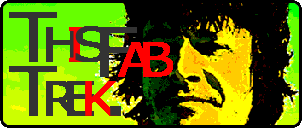
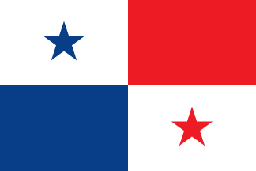
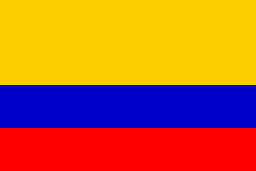
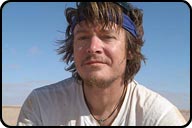
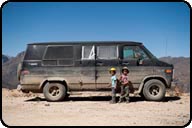
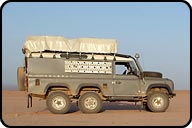

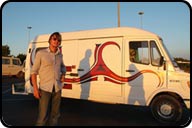
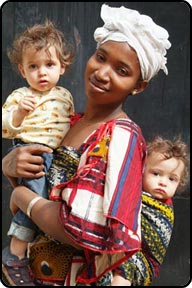
 contains Festival/Fiesta/Art photography.
contains Festival/Fiesta/Art photography.
